4 Simple Ways To Accomplish Your New Year’s Fitness Goals In The COVID Era
Something strange happened to me this year. A thought entered my brain that didn’t make sense. A thought I realized I’ve had every year for over a decade, since I first began a serious pursuit of athletics. A thought of praise, and a little annoyance, and of comfort. A thought that will be disappointingly false come January 2021:
“Boy, gyms are gonna be crowded.”
Every year is a new beginning, and fitness goals are among the most common resolutions. Hell, I know I always have one.
This year won’t be the same. Whether from lockdowns or simply the desire to avoid crowds, I doubt you’ll see the same surge of gym memberships and workout attendees. This is bad enough for the already-hurting fitness industry, but the big shame is all the people letting their health and fitness fall by the wayside because of the coronavirus.
I think pursuing health is one of the most rewarding and noble things you can do with your life. Knowing that thousands will likely forgo this pursuit breaks my heart, but worse still is the fact that exercise defends against Covid itself.
And I can’t blame ya. Fighting for improved fitness is hard enough as it is. No gyms? Forget about it.
But what if this is actually an advantage? You’ve gotta have a gym to workout, right? Wrong. In fact, I think one of the biggest reasons for failing a fitness resolution is BECAUSE of the gym. Here’s my logic:
Gyms are crowded at new years as everyone gets their memberships. If you are like most people, you have a small window before or after work to get your exercise done, and it’s the same with everyone else. Half the time you’re driving to this-or-that fitness club only to find you left your shoes at home, forgot a towel, and by the time you get to the workout floor, all the machines have a waiting list. I’m a huge fan of group classes like Crossfit, and there’s no really replacement for that until covid dies down, but with the money you’d spend you could kit your garage with the necessities.
The real problems aren’t about your gym membership, they’re about how you plan and the commitment to your goals. In this article, I’ll talk about how to set vivid real fitness goals that you feel connected to. Then we’ll discuss working out at home, using your environment, and optimizing recovery. Put these together, and you may never need a gym membership again.
Setting Your Resolution
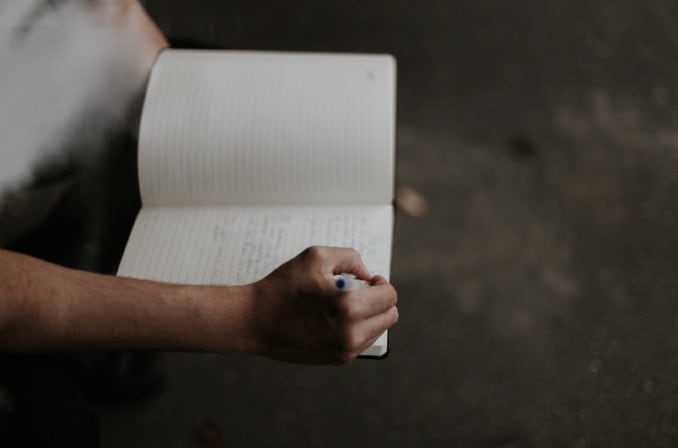
If you read nothing else in this guide, make it this section. One of the most important parts of achieving a fitness goal is how you set the goal. Casually decide you want to “be fit” this year? I hope you love working out because without natural enthusiasm your goal isn’t going to be good for much.
Really sit down with it though, figure out why you want to be fit, connect with it, and set clear targets? Well, that’s a whole different story.
Personally, I set goals using a multiple-step program based on the work of SEALfit creator Mark Divine. Mark is a yogi, martial artist, and business owner who served as a Navy Seal commander for 20 years. I first came across his goal-setting work in his book The Way of The SEAL, and I have been using them as the structure for my own projects ever since.
The secret to his success is to have a clear sense of purpose, create a larger mission that is connected to your purpose, and then break it down into target goals.
Uncovering your purpose is personal work that only you can do. If you already have a strong sense of purpose in your life, great. Write it down and connect your fitness resolution to it. Fortunately, a healthy body will support nearly any purpose in life.
If you believe it’s your purpose to be a great businessman and leader? Great. The mental focus benefits of exercise, not to mention energy and confidence will all be a huge asset here. Think you are meant to be an artist? A good, healthy, and functional body is one of the best ways to calm your nerves and maintain a stable emotional state. I know many artists who come up with ideas while working out or ease their creative anxieties by doing some push-ups.
Your body is your vessel in this life, and taking care of it will give you better mental faculties and resources for any other pursuit.
If you don’t have a clear sense of purpose, then it’s time to do a little soul searching. For the sake of brevity, I’m not going to detail Mark Divine’s whole process for uncovering your purpose, but here’s the cliff-notes version.
Uncover Your Purpose
Have a pen and paper or a word document open. Then start by closing your eyes and taking at least 5 deep breaths, inhaling through the nose and exhaling through the nose or mouth.
At the end of the last breath, answer the following questions. Try to answer instinctually and honestly. Really imagine what you’d do in these scenarios.
- If a terrorist event or natural disaster struck your town, what would you do?
- If you won the lottery, how would you use the money?
- If you had the opportunity to take part in an inside-deal with no chance of anyone ever finding out, would you?
- If a friend asked you for help moving but you were about to go see a movie, how would you respond?
- If you had one year left to live, how would you spend it?
Answering these questions gives us clues to our values and stand. It opens up the door to see our inner sense of stability. When you finish answering these questions, take a few moments to write down your stand: a set of small statements about your beliefs and actions.
Here’s my stand:
- I will endeavor to do right by others and be selfless, first.
- I will take responsibility for my actions, and the changes I want to see in my life. It is not on anyone else but me.
- That said, I will be a student and ask for help. I will use the willing wisdom of those who have gone before me to overcome challenges and accomplish my goals.
- I will face life’s hardships bravely and think first to do what is right rather than what is comfortable.
You can write as many statements as you’d like. My full stand contains about 15 such statements. After you finish, you can write your actual purpose. Again, sit and take at least 5 deep breaths. Even better is to breathe for a full 5 minutes, so your mind is truly clear and your intuition is strong. Then write your purpose. This can be a few short sentences or full pages.
Here’s my purpose as I last wrote it:
“My purpose is to see the light in the darkness; to see the beauty in the world and bring it forward. It is to seek constant improvement as defined by seeking right-action, first at the level of myself, then as a member of my family, community, country, and the human race. It is, in short, to live a meaningful life that provides value to others as best I can.”
Create Your Mission
Once you have your purpose statement, it’s time to create a mission that is rooted in your purpose. A mission is a broader long-term goal. Most new years resolutions are not missions, but targets. Without a broader mission that the targets serve, it is easy to let go of your target or simply slip back to your old ways once the target is achieved.
Like your purpose, having a mission gives your new years’ resolution something greater to serve.
Personally, I find the best missions are those that either describe an end state such as being fit and healthy enough to work out regularly, play basketball with my friends, and pick up my grandkids when I’m 80. The other great mission structure is to choose a massive effort goal, AKA a 20x goal. This would be something like running a marathon or hiking the Appalachian Trail.
Decide a specific date you want to achieve the mission and you’re golden.
As you come up with your mission, try framing it as a story. This will help you visualize success, and communicate it to others.
When I had chronic fatigue syndrome knock me out of athletics, I immediately created this mission:
“Within the next 5 years I will not only heal from CFS/ME, but I will also become healthier than at any time in my life. I will do this by intelligently learning from podcasts and audiobooks, creating a stable income that I can sustain even when my health is poor, and by remembering to enjoy my life even while I pursue this goal.”
One final tip: don’t rush it. Set a goal at least a year out, and more if it’s lofty. Bill Gates has said that most people overestimate what they can do in a year and underestimate what they can do in 10 years. For big goals especially, the point is to give yourself the time to change your lifestyle.
When you achieve your mission, you will do so because the pathway to success has simply become the way you live. The habits and tasks will become normalized. You’ll become the kind of person who can run a marathon or be the fittest senior in his or her neighborhood.
And this is where, finally, we arrive at your new year’s resolution: the first mission target to get you on the path.
Mission Target 1: Your New Year’s Resolution(s)
We achieve a longer mission by identifying targets that will move us along the path, then knocking them down one at a time. I like to come up with 8 targets that define a path, and then find the first 3 to focus on for the next year.
Project into the future. What are the 8 to 10 things you feel like you need to learn, achieve, or make a habit for mission success. With fitness goals, learning is one of the number one ways people fail. We go to the gym expecting ourselves to just figure it out, with no structure or understanding. One of the most powerful ways to change this is by getting a good book, finding a program, and getting educated. Knowledge is potential power. I’m going to do my best to provide you plenty of knowledge in this article alone, but definitely write down some mission targets like “find a book about gaining muscle” or “learn how to eat to support fat loss.” Whatever feels like some education would empower you.
Here are some Example targets for a mock mission of being fit enough to do a 13 mile Spartan race beast by summer in 2 years for someone who is obese and has no athletic history
- Learn how to heal shoulder injury and improve hip mobility using The Ready State programs
- Read stories from people who were obese, became fit, and placed in events like Spartan race or other competition
- Learn how to safely workout with barbells and start a strength program
- Begin a ruck program (walking with a weighted backpack)
- Find an online program or coach to teach proper running form
- Be able to run 13 miles without stopping by today next year
- Be able to walk 13 miles 6 months from now
- Be able to walk 13 miles with a 30lbs pack 9 months from now
- Lose 30lbs, then start rock climbing at least once a week by this time next year
As you write down goals, you may notice that you naturally see how to break them down in your head. For example, because we know the Spartan race beast is 13 miles, we want to set goals to be able to walk, Ruck, and run 13 miles over the next 2 years.
At some point, we’ll want to add more goals about upper body skills or doing shorter obstacle course races as prep, but we can always revisit our mission later. Right now we just want to discover the best targets we can realistically work on now.
Looking at the targets above, I’d say this person would want to pick
- Read stories from people who achieved a similar goal.
- Be able to walk 13 miles 6 months from now
- Start a progressive rucking program designed to increase the distance you can walk while also increasing strength
- Learn how to support fat loss with nutrition, biohacking, and recovery tips from this and other articles on The Ready State Blog
Once you have a similar list, pick a target to think of as your “resolution” and then use the others to define the path to get there. Here we’d use “walk 13 miles at one time within 6 months.” For an obese person, this goal will primarily require weight-loss.
The rest of this article is going to cover the best ways to get fit without a gym membership.
Let’s get started.
Equipment (or the lack there-of)
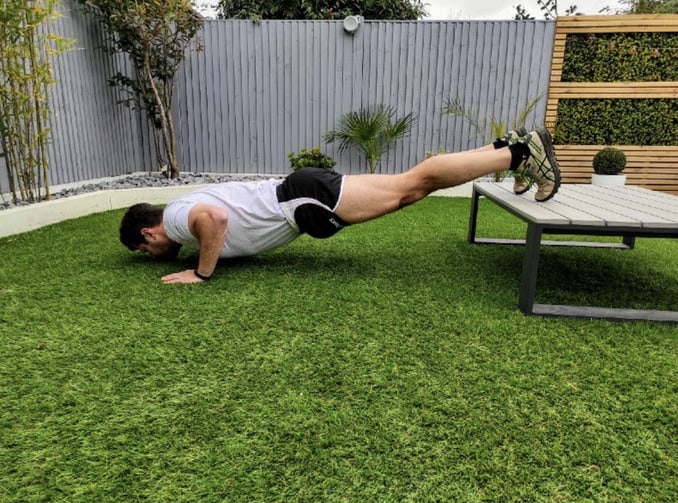
Without a gym, the challenges we face are: finding equipment or learning how to train without it, understanding the role of exercise, deciding what workouts to do for our goals, finding guidance, creating a schedule. Actually, the only challenge here that is unique is finding equipment. Everything else is a problem even if you have a gym.
You don’t need equipment for cardio, even if you have major mobility restrictions. Just walk, and if you’re not ready to run, fill a backpack with some heavy books and then walk.
High-intensity interval training can be difficult to access since not everyone can sprint, do burpees, or engage in plyometrics without risking injury. Still, a simple bicycle solves that dilemma, and you can always save up for a secondhand assault bike or rowing machine.
Even strength training isn’t hard to do. Do you know how much you can train with a pair of gymnastics rings and a single kettlebell? The simplicity of limited gear is an asset. Much as I love all the possibilities of a set of dumbbells, a squat rack, and machines I don’t even know the name of, I don’t love the decision fatigue. On the other hand, I’ve been training for the past year using only a 35lbs kettlebell, gymnastic rings, and bodyweight exercises (push-ups, pull-ups, squats, etc.) with better consistency and results than I ever did wandering into a fancy health club.
Not convinced? Here’s a list of equipment you can buy that cover 90% of your gym needs for less than a few months of membership fees.
- Resistance bands: no dumbbells? No excuse. Resistance bands provide, well, resistance equal and greater than weights at a fraction of the prices and way more portable
- Secondhand assault bike: for a couple of hundred bucks you can get an assault bike, rower, or other conditioning devices by seeking out gyms or owners that are looking to make a quick buck or are going out of business
- Backpack + heavy books: known as rucking, you can up the challenge of walking by simply throwing on a pack and having heavy stuff in it. For packs, I recommend GoRuck, and for books? Becoming a Supple Leopard is a good start.
- Gymnastic Rings: if you have a sturdy tree branch or some roof beams in your garage, congratulations, you just got half a gym via gymnastic rings. From back rows to ring dips to muscle-ups, the strength progression possibility of rings extends from the lowest beginner levels up to the most impressive athletes on the planet.
- A single kettlebell, 25lbs for women, 35lbs for men: a single kettlebell is an immediate access point for strength training, metabolic conditioning, cardio, and function. Not convinced? Do 5 minutes straight kettlebell swings. Result? High heart rate, sore muscles, functional improvement, and fitness. One of my favorite ways to get people quick results is to get them doing 5 minutes of KB swings every other day for 6 weeks. You’d be amazed at what this alone can accomplish. Again, you can easily attain one by finding a gym that is going out of business or an owner looking to make a buck
- Lacrosse balls: we’ll address mobility in more detail later, but if you’re worried about getting all the fancy equipment, start with lacrosse balls. 90% of my mobility work that uses equipment involves lacrosse balls. The other 10% uses loop bands that also double as a tool for resistance training.
As you can see, there’s a ton you can do without breaking the bank. Want to do barbell work or make a fully kitted home gym? I’m all for it, but while you save money on gym dues to fund that project, start training now.
Simple-Ass Workouts
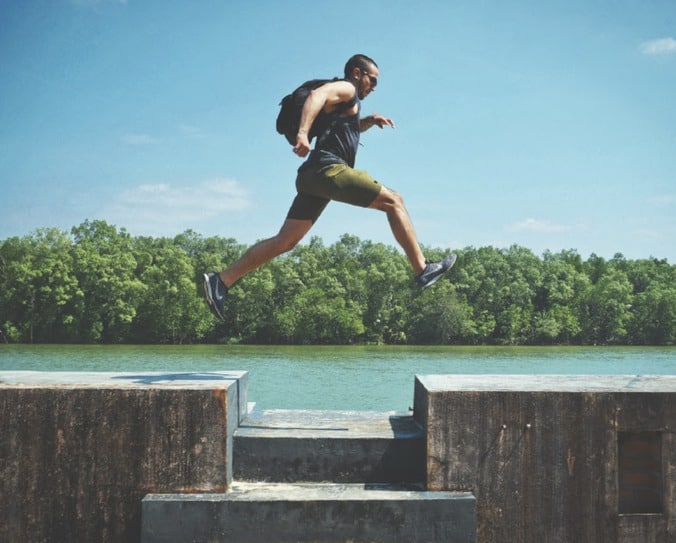
Ever heard the acronym KISS: Keep It Simple Stupid?
Wish I could put that on a billboard outside every gym. It’s not that exercise is simple, but especially when people first start, they over-complicate things. Exercise is nothing more than a stimulus that tells your body to adapt. Beyond that, recovery is where the magic happens. If your quasi-rocket-science Superman ultimate gains fitness program isn’t yielding results, it’s probably because of your nutrition and recovery, or you are overtraining.
The other big myth is that your style of training matters so greatly. So many people still try to solve obesity exclusively with cardio and never touch a weight. The truth is, muscle gain and fat loss are not mutually exclusive until you are already quite fit.
Strength training, high-intensity interval training, and resistance training all not-only benefit strength, but improve your metabolism and burn fat. Don’t get me wrong, I’m not anti-cardio. Aerobic exercise has unique benefits for recovery, cardiovascular performance, and oxygen utilization.
But I’m not a fan of chronic or exclusive cardio. Even in distance athletes, I think strength training and a high-intensity training day should be the base of one’s program, with one long and hard cardio day a week, and the rest of your cardio should be very light.
Why? Because it’s quite easy to over-train with cardio. You might feel like you’re really burning fat and breaking a sweat, but you’re also keeping your body in prolonged fight or flight and burning through your hormone stores.
15 minutes of strength, 5 minutes of intensity, and a long walk
So what’s the workout plan I actually recommend? Simple: strength, intensity, and a big walk.
I prefer minimum-effective dose training when it comes to actual workouts. You can absolutely train more than this. My workouts are closer to an hour each, but this is because I love training and using my body. A workout is meditative and also a favorite hobby.
I still believe I could get 99% of the physical benefits from much less, and frankly, I often take a few weeks off to avoid overtraining.
The program I recommend involves a strength workout on Monday, a very short high-intensity workout on Wednesday, and a long walk, ruck or run on Friday. For the strength workout, I use the workout I described in Fit over Fifty: How to build muscle at any age. Based on the program in the book Body By Science, this workout is designed to sustain lifelong strength gains and improved health in 12 minutes a week.
15 minutes of strength
How is this possible? By doing large, functional exercises very very slowly. The idea is that slow repetitions yield total muscle failure, whereas typical fast reps don’t recruit all the muscle fibers available.
All I know is that after this 12-minute workout, I was always more sore than during the longer bodybuilding sessions I used to do. I also saw the same rate of improvement doing just this one workout a week as opposed to 3 bodybuilding sessions a week, and with far fewer aches, pains, and tweaks.
Here’s the workout
- 10 slow pushups or chest press
- 10 slow ring rows (optional)
- 10 slow pull-ups, or lay pull-downs
- 10 slow decline push-ups, shoulder pushups, or shoulder press (optional)
- 10 slow squats
The push-ups, pull-ups, and squats are required but the other two exercises are optional. All of these can be done with minimal equipment, as you can see.
This is by far the base of all my programs. For one thing, muscle tissue is well associated with longevity. It also improves your function, in turn, healing and reducing injury, and muscle improves your ability to burn fat.
It’s also a great benchmark workout. Tracking progress is easy by having a journal on hand. For more detail, read my article Fit over Fifty: How to build muscle at any age. The section titled “the workout” goes into high detail about optimizing this workout as your sole training session.
5 minutes of intensity
High-intensity training such as sprint intervals is designed to hit the highest heart-rate ranges. Training tailored in this way has some of the best benefits for your hormones, and also fat loss. You don’t need much though, a mere 5 to 10 minutes a week will garner positive health benefits without burnout.
The idea is to work for 20 seconds up to a minute as hard and fast as you can, then take big rest periods between sprints or rounds. Actual sprinting requires the least equipment but can be problematic if you are not accustomed to running. If this is the case, an air-dyne, assault bike, or rowing machine may be a good alternative if you can find one you can afford.
You can also do hard and fast total body movements like burpees, kettlebell swings, and other plyometrics.
Kettlebell swings are a great low-impact tool. You can set a timer and do swings for 5 minutes with as few breaks as possible, or you can do 3 or 4 rounds of 60 seconds of swings with a 60-second break between rounds.
Rounds will focus more on intensity while the prolonged 5-minute challenge will have a cardio element. It’s still very-much-so high-intensity exercise, but you may prefer one to the other.
The point is to really push hard and go for a max effort. I like to say these workouts should be mentally difficult, as a gauge for the intensity.
The Long Ruck
Finally, we have the long ruck. I love that we can get damn fit without cardio, but in many circles, it’s gone from overused to never-seen. I think this is a mistake. Cardio may be boring, and hard (especially if you have a genetic predisposition toward power training, like me.)
However, there are benefits for your energy that just can’t be matched elsewhere. This is why I promote 1 long cardio workout a week, as well as low-level cardio throughout your day (more on that later.)
I used to run cross country, and it can feel great to just hit the road for a few miles. It also beats you up. Running is natural for humans, but even for me, it’s much harder on the body than other tools. This is especially true for new athletes.
I’ve become quite a fan of rucking as an alternative. Start by seeing how far you can walk once a week, unencumbered. When you can walk at a decent pace for 30 minutes, start bringing a pack with 5lbs in it. You can increase either the length of your walks or the amount of weight in your pack, to increase the difficulty. In 2016, I did a 30 day backpacking trip carrying 30 to 50lbs for 4 to 8 miles a day, and not on flat terrain.
Despite my athleticism, it kicked my ass. I felt like I was always the most tired person there, but at the end of that month, I came home with the energy I didn’t know I could have.
Another benefit of cardio is the opportunity to explore outside. Some of the best tools for our health simply involve being in the elements. I personally also loved discovering how far my own two feet could carry me. Every ruck is like a little adventure.
Out in the elements
As a final tip, train outside with a “no weather excuses,” attitude. Too cold? Too hot? Both cold and heat activate our biology to burn fat, create hormones, detoxify, and boost our brains. Eschewing a workout because of either is leaving a powerful asset unused.
I’m not suggesting you try to become Wim Hof from the get-go, but if it’s cold outside, layer up as much as you need to in order to workout. Eventually, you can start using cold therapy techniques as an add-on, and intentionally train with less weather protection.
From air quality to vitamin D production to the biological benefits of heat and cold, the outdoors are a treasure trove of health benefits. It is common for people to improve their energy, lose weight, and even report strength and muscle gain from cold thermogenesis alone.
So, as I said, get outside for your workouts. Barring a blizzard, hurricane, tornado, or lightning storm, you can handle the weather for a 5 to 30-minute workout or ruck. The more often you make the world outside the place you train, the better.
Personalize it
Obviously, your fitness resolutions will be individual to yourself. Feel absolutely free to add more to this training schedule for your pursuits, modify it, etc. I’m just showing a program that is great for improving fitness in most scenarios. It might not have you perfectly ready for a marathon or a Spartan race, but you can self educate and begin tailored training as you learn.
Personal Cold Thermogenesis
Cold therapy is the act of intentionally exposing your body to cold in order to get the many benefits of adapting to the cold.
A simple daily cold shower routine improves recovery greatly, burns fat, and lowers systemic inflammation.
Practitioners of the Wim Hof method use breathing techniques and ice baths to adapt their bodies and withstand frigid conditions in running shorts and little else. They often report recovery from complex disease, accelerated wound healing, massive weight loss, and increased energy.
If you find this topic interesting, I have written a full guide for The Ready State called The Power of Cold Therapy here.
The Rest of The Time: Food, Sleep, Movement & Maintenance
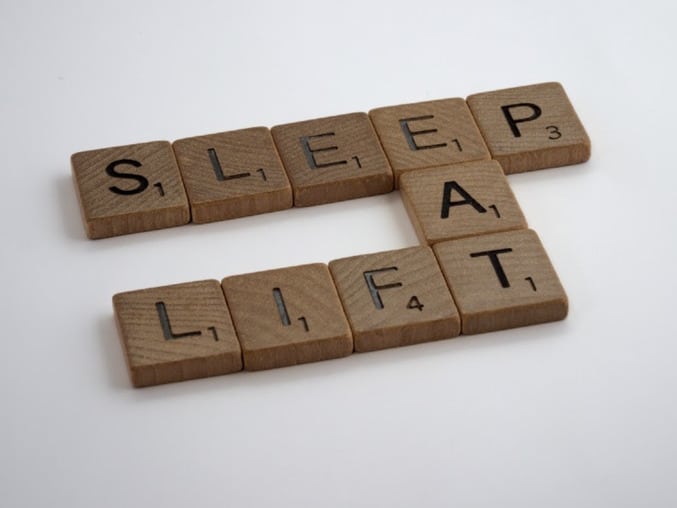
With your new Covid-proof training routine, you’ll probably notice benefits from the exercise alone. Even so, exercise is not when you improve. You improve during the recovery period between exercise, and there is much we can do to optimize that period.
The biggest 4 factors are your food/nutrition, sleep, movement habits during the day, and maintenance/mobility work.
Each of these topics can be expanded upon greatly, but I’m just going to address the key points. Hell, in the spirit of simplicity, you nail these and you’ll probably be better off than many experts and theorist nit-pickers.
Nutrition: 3 Simple Rules
1.) Eat enough protein to build muscle and enough carbs and fats for energy
It’s pretty simple. Your body needs protein to build and maintain muscle tissue. Protein also is not directly converted to energy, making it good for reducing cravings and satiating hunger without adding to your daily calories. If you don’t get enough calories from fat and carbs, yes, your body will convert protein to energy, but it’s a secondary process.
So if it’s the difference between beef jerky and a sugar donut, I suggest the jerky.
There’s great debate about carbs vs fats as far as the rest of this goes. Frankly, I’m a big fan of both low carb and ketogenic diets, but I think it’s we’re clutching at straws a bit. Get enough protein, and from there, whether the rest of your calories are from fats or carbs, just aim for whole food sources.
2.) Eat real food and avoid processed stuff
Did you grow it in a garden? Did it once wander the earth? If not, don’t eat it.
I personally believe the biggest nutritional villain truly causing disease is all the processed crud we eat. Some of it (a lot of it) even sounds like real food. Vegetable oils in our food are oxidized, rancid junk products that increase insulin resistance and drive obesity.
Vegetable oil consumption is the highest increased food intake of the last 30 years alongside spikes in heart disease and obesity. Since many of these oils are impossible to create without industrial technology, they have never been part of any animal’s diet including humans until cottonseed oil started being advertised as a cooking alternative in the 1800s.
Add in chemical preservatives, pesticides like glyphosate, and it’s not hard to believe we shot the messenger debating over meat vs. plants, and carbs vs. fats.
If you don’t get an ounce of corn oil in your diet and have never ingested glyphosate (which is highly unlikely since it’s in our rainwater) then that steak you live on Fridays is probably one of the healthiest things you can eat.
Eat real food and avoid artificial BS.
3.) Under-eat most of the time, over-eat sometimes
Fasting is pretty popular, but can be overdone and may not be useful for weight loss for many people.
Calorie restriction: the act of consuming fewer calories in a day than you burn from activity, has been well linked to better health outcomes and is necessary for weight loss to an extent.
What people don’t mention is that prolonged or too extreme calorie restriction lowers your metabolism, catabolizes muscle, and makes it easy to regain the weight. To prevent this, all you gotta do is feast occasionally. Once a week I make sure to eat more calories than I burn, by a large margin.
I still eat quality food, this ain’t a cheat day. But I don’t focus on eating little, and if anything I intentionally eat more than I am hungry for.
Sleep
If you ain’t sleeping you ain’t recovering. Optimizing sleep is one of the best ways to recover quickly from training. In general, you want to sleep at the same times each night and wake at the same time in the morning. A very small group of the population may only need 6.5 hours, and I’m talking SMALL. Everyone else needs 8 hours of sleep a night for optimal function and recovery.
One of my favorite tips for optimizing sleep is to use an app called Brain.fm.
Brain.fm has music tracks that help put your brain in a sleep wavelength. Called binaural beats, these have been essential for me.
I also love Dr. Kirk Parsley’s sleep remedy. It’s a natural blend that kicks off your body’s own sleep cycle.
Movement
Stagnation such as sitting for long periods is a health epidemic. NASA research under Joan Vernikos has found that prolonged stagnation increases disease risk and your risk of early mortality in ways that are not improved by daily exercise.
Instead, changing posture and moving often is the key. It’s also a way to improve fat loss and metabolism.
Personally, I try to walk as much as possible. I often write these articles on my phone while lapping my neighborhood. Many lack that luxury, so instead try a standing desk (my favorite is made by Vari) or at least change posture every half hour. Walk your dog 3 or 4 times a day during breaks. Move your butt.
Maintenance/Mobility
Last but certainly not least, I strongly suggest daily body maintenance. Hopefully, you already have a routine if you’re on The Ready State. If not, either read Dr. Starrett’s Becoming a Supple Leopard or, use the routines here.
I do 15 minutes of mobility work every morning, and 30 minutes to an hour on non-workout days.
Conclusion
Lack of gym access is really no reason to abandon your fitness resolutions. Heck, I think it’s an advantage. Sure, gyms offer equipment, but they’re also crowded complex, and expensive. Having a membership offers no more guidance than figuring out how to train at home, and the wide variety of equipment can quickly become decision fatigue.
Unless you hire a trainer or are in group classes, it’s really not much different than training at home.
The biggest problem is usually the goal itself. Fitness is hard to attain, especially if you’ve never had it and didn’t grow up in sports. Using powerful and purpose-driven goal setting is essential for real lifestyle changes.
The actual training doesn’t have to be complicated. You can make lifelong improvements is a small few workouts a week. Many people come to love exercise, and longer workouts can be meditative and fun, but you don’t need much in order to improve.
Especially in the beginning, a minimum effective dose program can increase progress by preventing burnout and overtraining.
Leverage cold thermogenesis and then dial in your nutrition, sleep, movement, and recovery, and boom.
Whatever your goals, I hope this article helps you not only keep fitness resolutions despite Covid but achieve the heck out of em’.












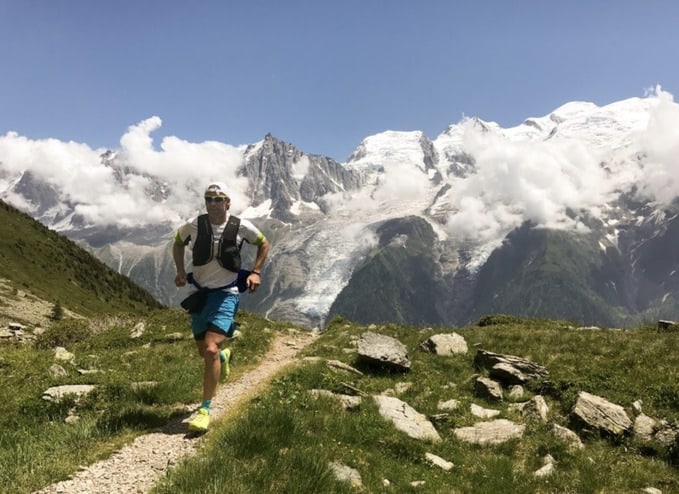
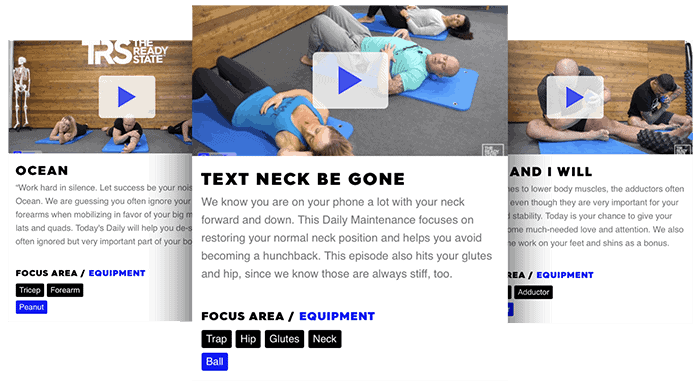






Thanks for the book recommendation!